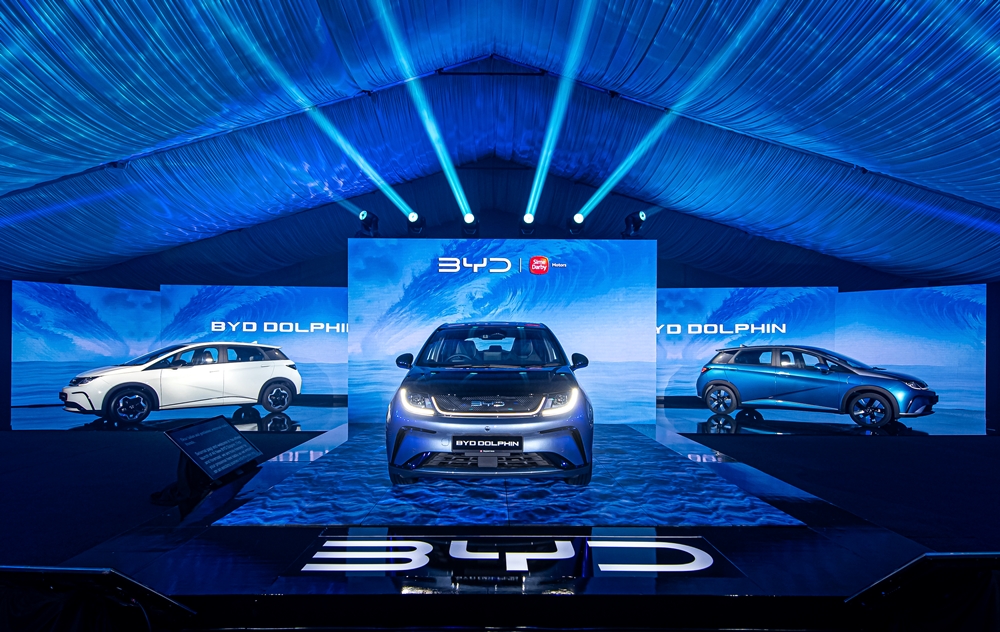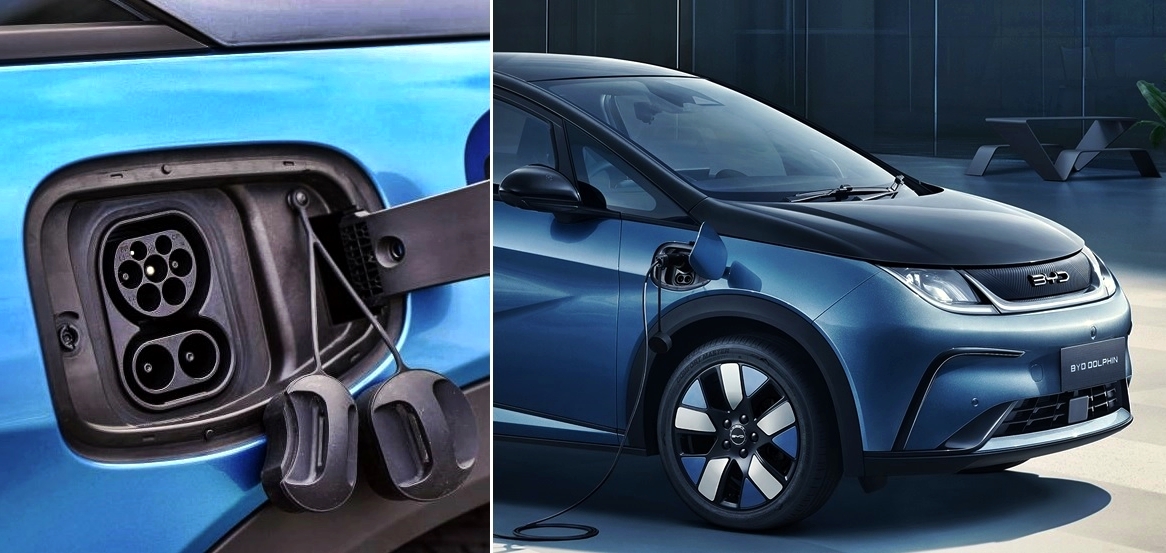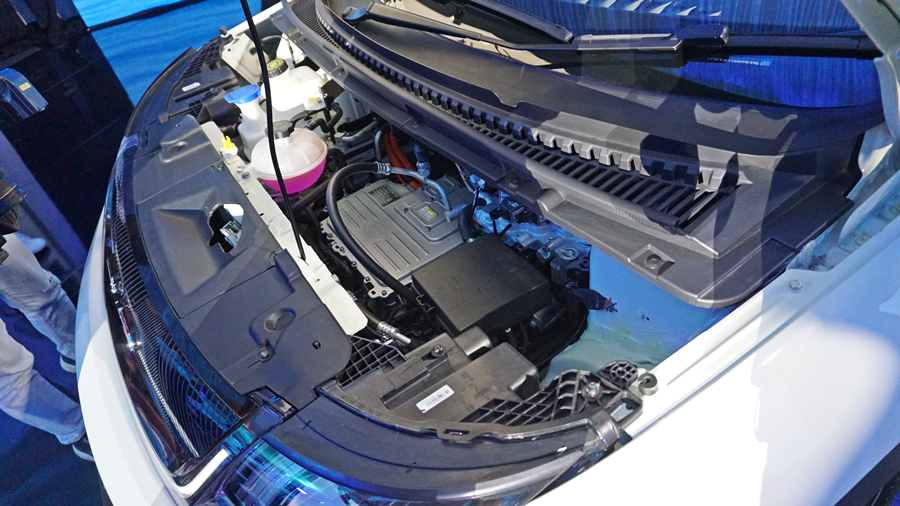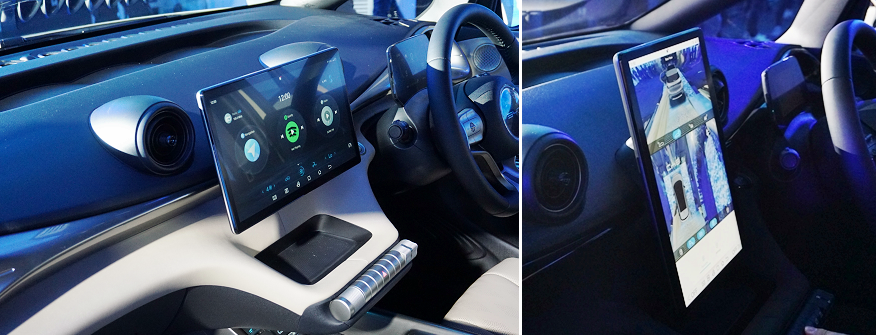Just more than half a year back, Sime Darby Motors launched the BYD ATTO 3 as it first product from the Chinese carmaker. Almost 3,000 units of the model have been delivered and now comes the second EV model – the Dolphin.
Offered in two variants – Dynamic Standard and Premium Extended – the duty-free prices of the Dolphin are from RM99,900 and RM124,900, respectively.

Note however that these are recommended retail prices – which no one will actually be paying. While roadtax is exempted for the next few years (as well as import duties), there are still other charges to add on and the actual prices without insurance starts at RM100,530 and RM125,530. How much insurance premium you pay will vary, depending on your NCD and how the insurance company assesses your risk level.
Still, the Dynamic Standard would be the second cheapest EV in the market at the moment (after the Neta V). Sime Darby Motors expects the lower priced version to sell in larger numbers as the Premium Extended version is at a price level where there are alternatives that people will consider.

The Dolphin went on sale in China in mid-2021 and up till the end of 2022, total sales (in China) reached around 234,000 units.
Export version
The model has been progressively introduced in overseas markets but for the export version, the body length is 140 mm longer at 4290 mm. However, the wheelbase is the same at 2700 mm, while the 1770 mm width is also similar for China and export versions.

BYD e-platform 3.0
The Dolphin uses the latest e-platform 3.0 which it describes as ‘the cradle for the next generation of BYD EVs’. With the e-platform 3.0, BYD will be able to offer EVs that are more efficient, safer and intelligent.
Highly integrated, the platform incorporates extremely fast charging capability and with the world’s first 8-in-1 electric powertrain, ranges exceeding 1,000 kms are expected in future.
![BYD Dolphin EV [2023]](https://www.motaauto.com/wp-content/uploads/2023/07/BYD-Dolphin-8.jpg)
Blade Battery
Like the ATTO 3, the Dolphin uses the advanced Blade Battery developed by BYD which is a world leader in battery technology (BYD was making batteries before it started making cars). While also having lithium-ion phosphate chemistry, the Blade Battery was developed to resolve issues in battery safety.
The ‘Blade’ refers to the singular cells arranged together in an array within the battery pack, optimizing space utilization and increasing energy density. But the significant feature of the Blade Battery is that it is far less likely to catch fire even when severely damaged.

Extreme tests like the nail penetration test have shown that the Blade Battery will not catch fire, hence eliminating the risk of thermal runaway which can cause difficulty stopping fires in EVs.
Two battery capacities
For the Dolphin, there are two capacities – 44.9 kWh for the Dynamic Standard and 60.48 kWh for the Premium Extended. Depending on which test method is used, the range will be different. The ones publicised by Sime Darby Motors are 410 kms and 490 kms, respectively.
Both variants have onboard chargers for 7 kW AC supply if you use a residential outlet and can also use DC charging points up to 80 kW (60 kW for Standard variant).

Using a dedicated Wallbox would take about 7.8 to recharge from 0% to 100% or around 20 hours if you use the portable cable connection. DC charging time can be as short as 38 minutes.
Both variants also have V2L output meaning the battery can also provide power for external devices and equipment.

Power output from a single motor to the front wheels is 70 kW (94 ps)/180 Nm for the Dynamic Standard variant. The Premium variant has an output of 150 kW/201 ps)/310 Nm, and the 72% greater torque available gets it from 0 to 100 km/h 5.3 seconds quicker (7 seconds) than the Dynamic Standard version.
Different suspension
The variability of the e-platform 3.0 to suit different model types can be seen in the fact that the two Dolphin versions have different rear suspension.
![BYD Dolphin EV [2023]](https://www.motaauto.com/wp-content/uploads/2023/07/BYD-Dolphin-6.jpg)
![BYD Dolphin EV [2023]](https://www.motaauto.com/wp-content/uploads/2023/07/BYD-Dolphin-5.jpg)
While both have similar front suspension using those universal MacPherson struts, the Dynamic Standard is fitted with a lower cost torsion beam rear axle while the Premium Extended has a multi-link set-up. The more expensive version also gets larger 17-inch wheels.
Generally, a multi-link suspension offers better ride comfort and better wheel control also helps in driving dynamics. But for the average driver, there is unlikely to be any great difference with one or the other.
Almost similar equipment list
It used to be that, in terms of features and equipment, a more expensive version would have a lot more than the cheaper one. However, with mass production and the need to maximise volumes, manufacturers have probably found that it’s more cost-effective to order more so as to get lower unit costs and have more commonality in specifications.
![BYD Dolphin EV [2023]](https://www.motaauto.com/wp-content/uploads/2023/07/BYD-Dolphin-2.jpg)

![BYD Dolphin EV [2023]](https://www.motaauto.com/wp-content/uploads/2023/07/BYD-Dolphin-7.jpg)
With the Dolphin, this is evident as the features list is not greatly different between the two versions. For the extra RM25,000, you get these extra or upgraded items:
– 17-inch wheels instead of 16-inch
– 80 kW charging capability instead of 60 kW
– Panoramic sunroof
– Wireless charging pad
– Power adjustment for the front seats
– Ventilated front seats
– A LED reading light at the rear
– One-touch operation for all 4 windows instead of just the driver’s window
![BYD Dolphin EV [2023]](https://www.motaauto.com/wp-content/uploads/2023/07/BYD-Dolphin-1.jpg)
![BYD Dolphin EV [2023]](https://www.motaauto.com/wp-content/uploads/2023/07/BYD-Dolphin-4.jpg)
Even in safety systems, both versions have the same ADAS (Advanced Driver Assistance System) with active systems like Adaptive Cruise Control, AEB, Lane Departure Warning, Rear Collision Warning, Rear Cross Traffic Alert/Braking.
This differs (at least in Malaysia) from the Japanese, Korean and Malaysia models where the cheaper versions have less safety systems and might not even have ADAS.
For the Dolphin, the one difference in safety equipment is that the Premium Extended has a dual-stage seatbelt pre-tensioner whereas the Dynamic Standard has a single-stage type.
![BYD Dolphin EV [2023]](https://www.motaauto.com/wp-content/uploads/2023/07/BYD-Dolphin-9.jpg)
So apart from the performance difference, the Dynamic Standard is still very good value for money. You get LED headlights, automatic air-conditioning, key card for entry, a 12.8-inch centre display that can rotate from horizontal to vertical orientation and synthetic leather upholstery.
Different warranties
The warranty details, though summarized, are rather ‘complex’ (and that’s not even the fine print). The vehicle itself has a 6-year/150,000 km warranty which is pretty good. But not everything is covered for 6 years.
Two other warranties mention specific items with shorter periods of coverage. For the shock absorbers, wheel bearings, dust covers, AC/DC charging port assembly, bushings, gaskets, multimedia system, USB charging port assembly and PM2.5 filter measuring instrument, the warranty period is 3 years/60,000 kms.

The second specific warranty is for the lighting system, tyre pressure monitoring module, suspension, and ball joints which has a timespan of 4 years or maximum mileage of 100,000 kms.
The Blade Battery pack is covered for the first 8 years or maximum of 160,000 kms, standard for most EVs. However, for the drive unit, BYD reduces the maximum mileage by 10,000 kms but maintains the 8-year timespan.
![BYD Dolphin EV [2023]](https://www.motaauto.com/wp-content/uploads/2023/07/BYD-Dolphin-3.jpg)
Chinese cars much better today
We can see that the products of Chinese carmakers today are of much better quality and durability than the early ones that were sold 20 years ago. They are even as safe as European and Japanese models, as found by independent organisations like Euro NCAP.
However, there is still the test of time that will determine durability. These new generation Chinese cars look great and feel great but how lasting will they be? We don’t know yet since they have all only been in the market for a year and a half.

Presumably, having been developing and selling EVs for around 12 years, the manufacturers already know what doesn’t last and have made all the improvements necessary.
Now that they are aggressively exporting to markets which are used to the high Japanese and Korean quality, they need to be sure their products are comparable.
But remembering how there was some negativity about Japanese cars in their early years (the ‘Milo tin’ perception) and how they are benchmarks today, we are sure that the Chinese will evolve the same way – perhaps even faster with more advanced technologies.
